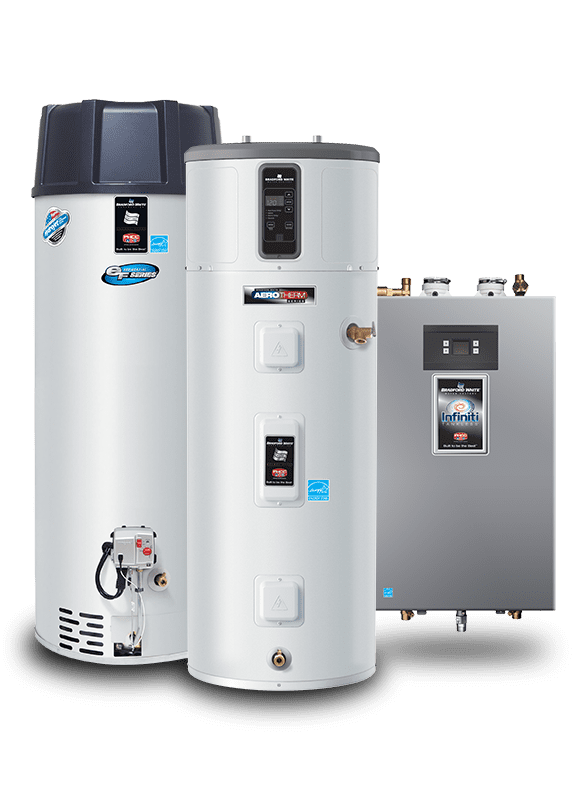Electric Water Heaters
The Positive Side of Electric Water Heaters?
An electric water heater uses electricity to generate heat. Electric tanks have two heating elements – one in the upper portion of the tank and one in the lower part of the tank. The upper element does most of the heavy lifting, while the lower segment is used to heat the water at the bottom of the tank and maintain the overall water temperature.
Since they don’t produce exhaust, they’re incredibly efficient – 95% or better in most cases – but they draw an enormous amount of power. The larger the tank is, the more power it will need to heat and recover from heavy use. Because electric water heaters are already so efficient, the new efficiency regulations won’t impact them, but don’t assume that “efficiency” translates to low operating costs. It doesn’t. Electric water heaters are costly to operate, even with their exceptionally high-efficiency ratings.
These water tanks tend to have low standby losses, which means that only the lower heating element is used to maintain water temperature once the water has been heated. The design and insulation of the tank are often sufficient to maintain the desired water temperature.


The Down Side of Electric Water Heaters?
Recovery times on electric tanks are long. Once the tank has been used, it will take an electric water tank much longer to recover than a gas-fired one. They also have a noticeably higher operating cost, mainly because electricity is more expensive than other fuel alternatives.
Electric water tanks are generally more expensive to purchase than their gas-fired cousins, yet the capacity and life expectancy is similar. Installing a replacement electric tank can be fairly expensive, when establishing an one as a replacement for another fuel type can come with a high price tag!
They usually require a 200-300 amps household electrical service, and your service must also supply 240 volts. They require dedicated circuit breakers and special wiring, so you may need to give your electrical service a significant overhaul if you want to install an electric water heater as a replacement for a non-electric model.
